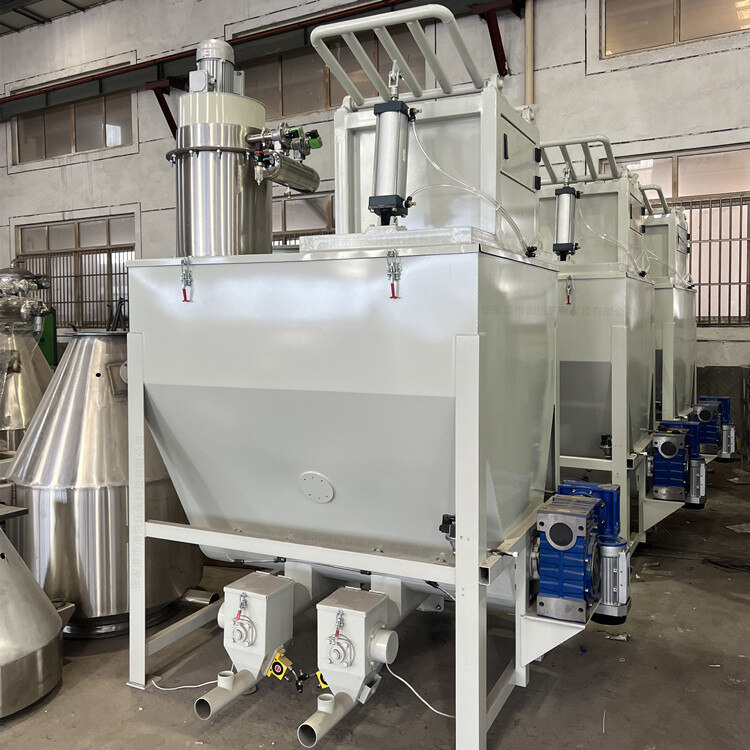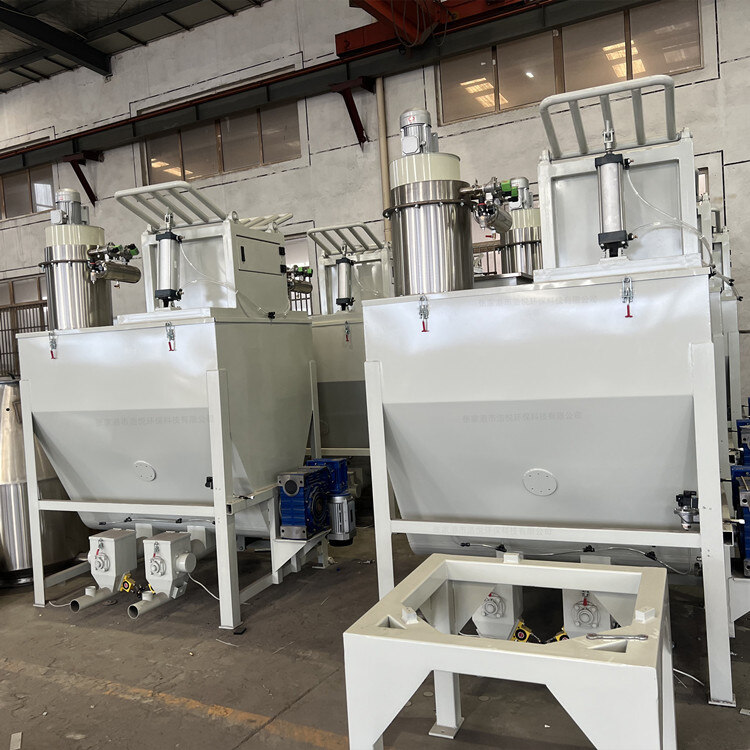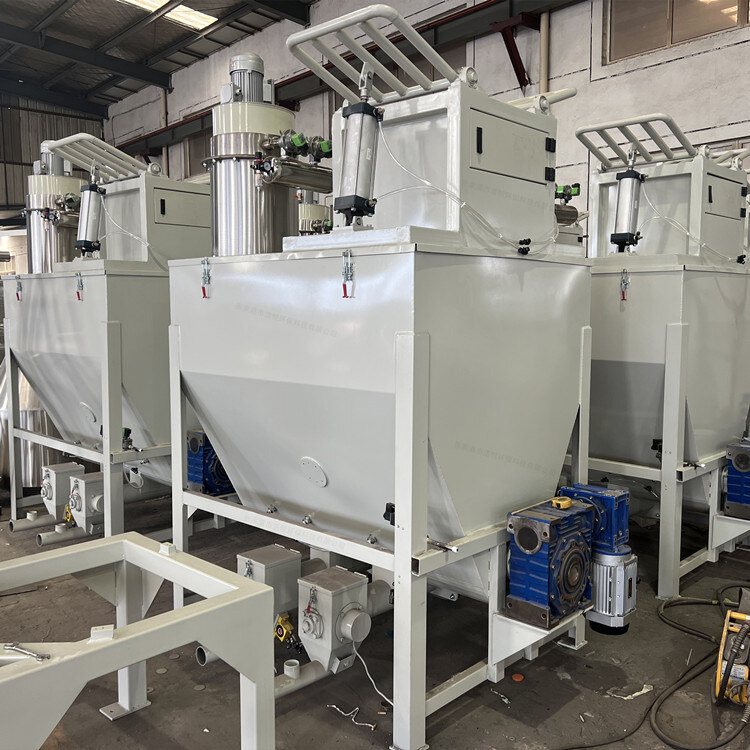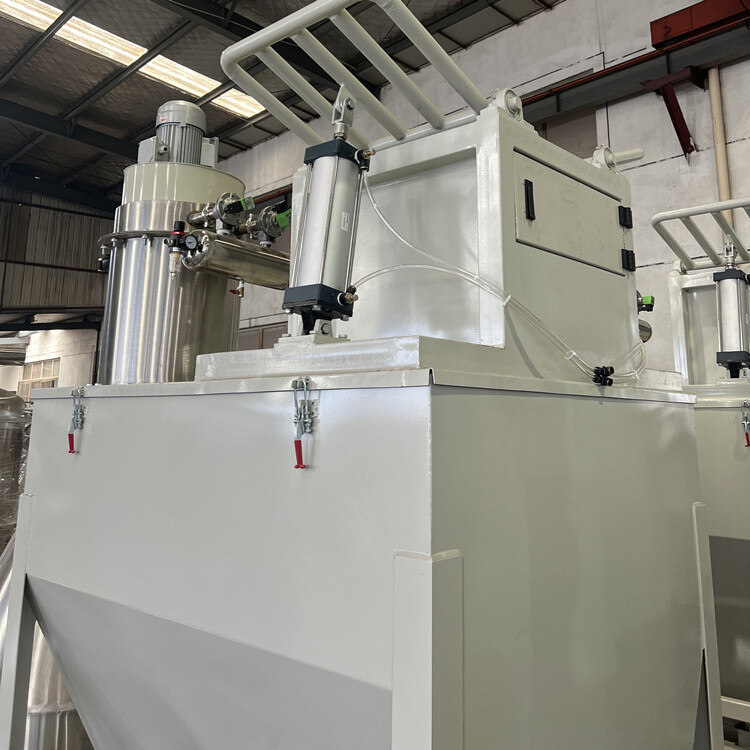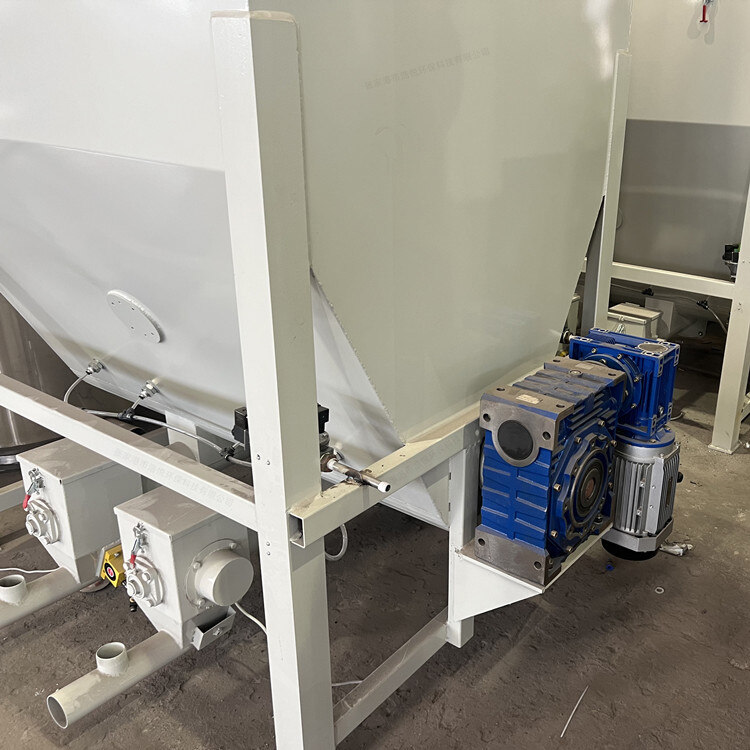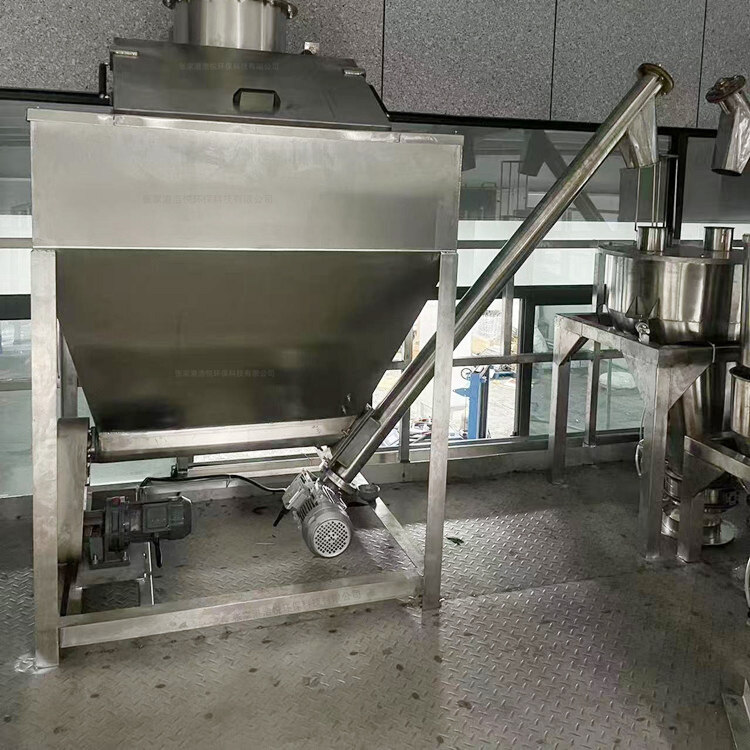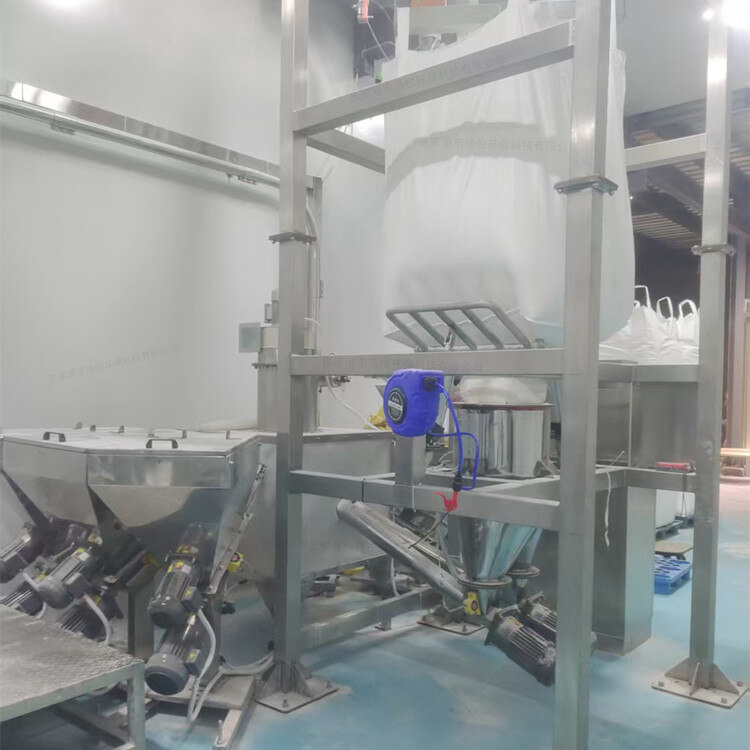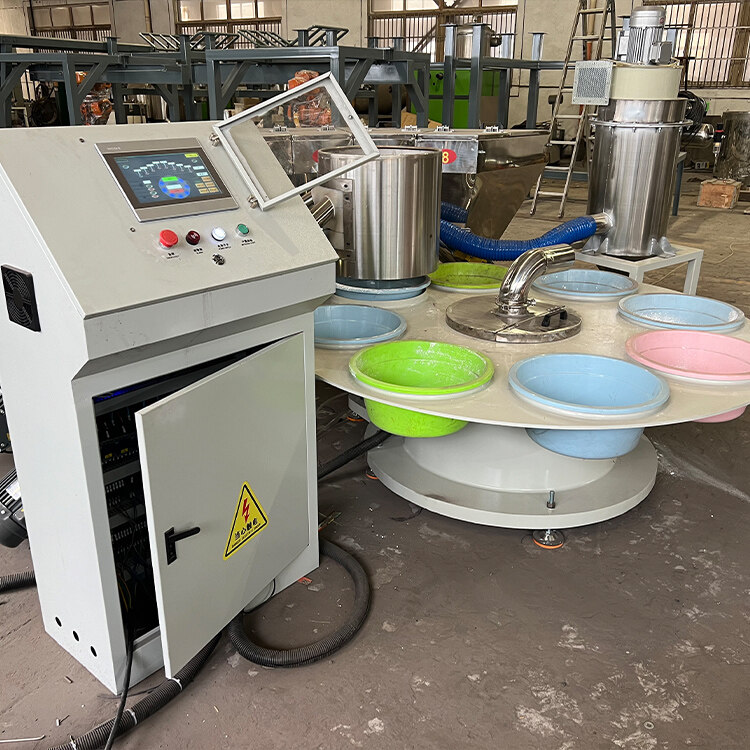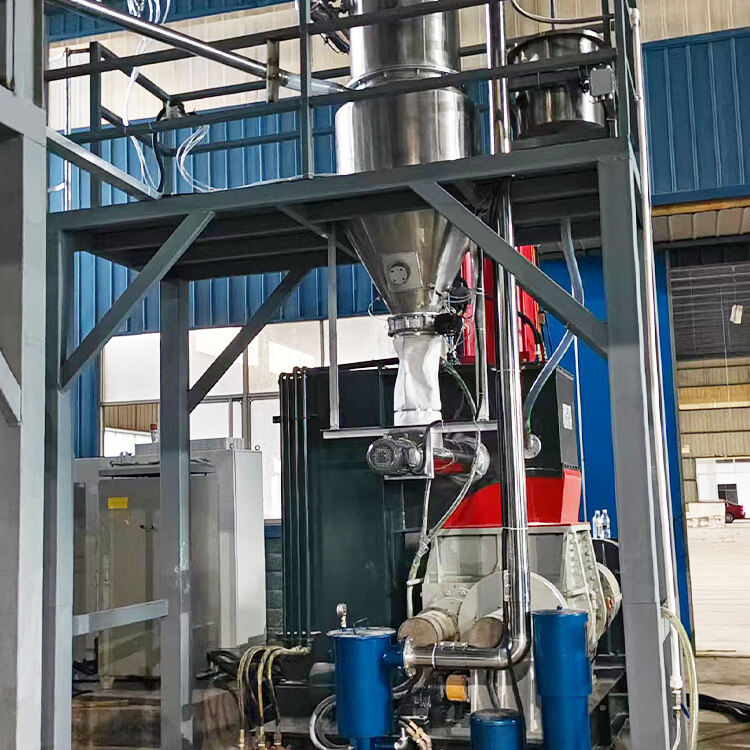- Introduction to automatic batching machine and fully automatic batching machine equipment
- The powder metering system tells you about the introduction of the mixing and drying machine
- 1000kg vacuum feeding machine
- Fully automatic small material batching system
- Research on Innovation of Automatic Weighing Machine Technology
- Design and operation of automatic batching system using PLC, industrial computer and frequency converter
Measurement and transportation of powder storage warehouse
- Category:Automatic metering and conveying equipment
- Hits:165次
- Release Date:2025-06-23
- Share:
- Inquiry
- Details
1、 Core functions of the system
Large capacity storage and intelligent management
The powder storage warehouse can provide storage space of 5-100 cubic meters to meet the batch storage needs of materials for different scales of production. The design of the warehouse fully considers the characteristics of the materials, and reduces material adhesion and accumulation through reasonable cone bottom angles (such as 45 ° -60 ° for flour warehouses and 60 ° -70 ° for cement warehouses) and inner wall polishing treatment, ensuring smooth unloading. At the same time, the bag filter installed on the top of the warehouse can effectively adsorb dust when materials enter and exit the warehouse, avoiding pollution; The material level monitoring system adopts various sensors such as anti rotation, radar, ultrasonic, etc., to monitor the inventory of materials in the warehouse in real time, achieve automatic warning and replenishment of low material levels, and intelligent shutdown of high material levels, ensuring production continuity.
High precision measurement and flexible control
The system supports two mainstream measurement methods: volumetric and weighing. Volumetric metering utilizes rotating components such as screws and scrapers to transport materials in a fixed volume. It has a simple structure and low cost, but its accuracy is easily affected by changes in material density (accuracy of about ± 1% - ± 3%). It is suitable for materials with stable density such as grain powder; Weighing measurement relies on high-precision weighing sensors to monitor the conveying volume in real time, and precisely adjust the feeding speed through closed-loop control, with an accuracy of ± 0.5% - ± 1%. It is commonly used in scenarios such as pharmaceutical raw materials and chemical additives that require extremely high measurement accuracy. In addition, the system can flexibly set the conveying amount according to the production formula, support continuous conveying or batch quantitative conveying, and adapt to different production process requirements.
Stable transportation and safety protection
According to the characteristics of the material and the conveying distance, the system can choose various conveying equipment. Spiral conveyor has strong sealing performance and is suitable for short distance horizontal or inclined conveying of 5-15 meters; The air conveying chute utilizes compressed air to fluidized the powder material, with low energy consumption and large conveying capacity. It is commonly used for long-distance transportation of bulk materials such as cement and fly ash; The pneumatic conveying system (positive or negative pressure) is transported through pipelines, with high flexibility and the ability to achieve multi-point conveying with good dust control. For flammable and explosive industries such as chemical engineering, the system can also be equipped with safety components such as explosion-proof motors and explosion-proof control boxes, combined with grounding and anti-static design, effectively preventing dust explosion risks and ensuring production safety.
2、 System composition and working principle
Storage Warehouse Unit
Warehouse structure: Made of stainless steel (in the food and pharmaceutical industries) or carbon steel (in the building materials and chemical industries), the cylindrical warehouse body is matched with a conical bottom, and the cone angle is customized according to the material fluidity to ensure smooth unloading of materials.
Auxiliary devices: The level gauge monitors the material inventory in real-time, the arch breaking device (vibration motor, air cannon, bin wall oscillator) prevents material arching, and the bag filter adsorbs dust to ensure a clean environment inside the bin.
unit of measurement
Volumetric metering: By rotating blades, screws, or scrapers, materials are transported from the storage bin to the conveying pipeline in a fixed volume, suitable for powders with good fluidity and stable density.
Weighing measurement: During the conveying process, the weight of the material is measured in real time using a weighing sensor, and the data is fed back to the control system. Accurate measurement is achieved by adjusting the feeding speed, which is suitable for high-precision demand scenarios.
transport unit
Spiral conveyor: It pushes materials through the rotation of spiral blades, with good sealing performance, suitable for short distance transportation, and can be installed horizontally or obliquely.
Air conveying chute: using compressed air to make materials fluidized, sliding along the chute for conveying, suitable for high flow, long-distance transportation, such as cement, fly ash, etc.
Pneumatic conveying system: The material is conveyed through the airflow (positive or negative pressure) inside the pipeline, which can achieve multi-point conveying and complex pipeline layout, with good dust control effect.
control system
With PLC controller as the core and touch screen operation interface, it realizes functions such as parameter setting (conveying volume, speed, formula, etc.), equipment monitoring, and fault alarm. The system can be integrated with the MES system of the production line, transmit production data in real-time, support historical record tracing and production process optimization, and enhance the intelligent management level of the enterprise.
3、 Typical application scenarios
Food industry: used for the storage, measurement and transportation of materials such as flour, sugar powder, milk powder, etc., to meet the strict requirements of hygiene, precision and safety in food production, such as precise flour ingredients in bread production lines.
Pharmaceutical industry: Processing pharmaceutical intermediates, excipients and other materials to ensure measurement accuracy within ± 0.5%, in compliance with GMP standards, commonly used for raw material transportation in the production of pharmaceutical preparations.
Chemical industry: Transporting materials such as carbon black, pigments, and chemical additives, the system has explosion-proof and anti-corrosion functions to ensure safe production in high-risk environments.
Building materials industry: achieve efficient storage and long-distance transportation of bulk materials such as cement, fly ash, and mineral powder, and improve the automation level of building materials production.
4、 Technological development trends
Intelligent upgrade: Integrate AI algorithms to optimize measurement strategies, achieve remote monitoring and fault warning of devices through the Internet of Things, and enhance the system's self diagnosis and adaptive capabilities.
Modular design: adopting standardized modules, supporting storage capacity expansion, flexible combination of measuring and conveying units, and meeting the diversified production needs of enterprises.
Green and energy-saving: Developing low-energy conveying technologies (such as high-efficiency pneumatic conveying systems) and energy-saving equipment to reduce operating costs and respond to environmental requirements.
The powder storage bin measuring and conveying system has become an indispensable key equipment in modern industrial production due to its high efficiency, precision, and safety characteristics. With the continuous advancement of technology, this system will continue to innovate in intelligence, flexibility, and greenization, providing strong support for the high-quality development of various industries.


